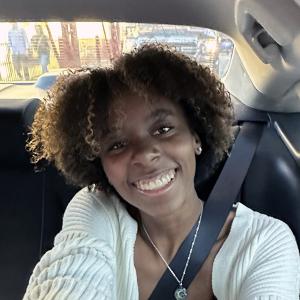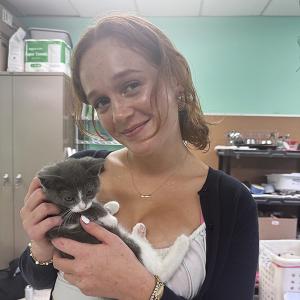Something I have learned about myself is that I am the type of person who will go to the ends of the earth to chase an idea. This has upsides and downsides. I’m certainly not always capable of determining what is or is not a good idea, for instance. One time I decided I wanted to try making a brand new type of baked good, never before seen in the history of humanity. I had plenty of ingredients on hand and the self-conception that I was some sort of culinary genius. But all of the ingredients I had turned out to be expired, and forty minutes later I discovered that the kitchen oven was full of rancid smoke. Mission failed.
Occasionally, however, I come across an idea that could work out great or end terribly, depending on its execution. And my time at college has taught me the value of learning to carry out these sorts of plans well. So this is the story of the time I turned a room in Wilder Hall into an escape room for my birthday party.
A long, long time ago, the day before my birthday, I decided that I wanted to do something special to celebrate. My birthday is in September, and the September that I came to Oberlin, I didn’t know about the Blue Rooster Bakehouse. Cursed be every day that I didn’t know about the Blue Rooster Bakehouse! Their chocolate cream whoopie pies brighten up any gray September sky. But I wasn’t going to the Blue Rooster for a whoopie pie. I needed a birthday cake. And I wanted it to say, “Happy Birthday, Naci!” on top in big orange lettering.
Along the way, however, I came up with a brilliant idea to make my birthday even more special. The week before, I had gotten accepted into the Puzzles and Immersive Narrative ExCo class. An ExCo (Experimental College) class is a course taught by students for credit, and the Puzzles and Immersive Narrative ExCo was exactly what it said on the tin: a whole class about creating an immersive game or series of puzzles. Think escape rooms, or alternate reality games. Unfortunately, I had to decline my invitation to the course, because I was very busy on the day that it met. But the thought popped into my head: what if I set up an escape room for my friends, for my birthday party? And this idea made me very excited.
So as soon as I got home from the Blue Rooster, I got to work. I had a whole concept planned out: the players would be astronauts on a spaceship, caught in an alien tractor beam while on the way to my out-of-this-world birthday party. They would each be given a character sheet describing exactly what their character’s skills were and how they could use those skills to break out of the tractor beam. I have a friend with an electric keyboard that I decided I would ask to borrow. Maybe the spaceship would actually be powered through music, and the players would need to assemble a song to be played on the piano… which would be connected to my laptop, which would then control a series of RGB lights over Bluetooth based on the notes being played…
But that ship never launched. Instead, I’m sorry to say, it fizzled out on the launchpad. Assembling that idea simply would have been too much work. I was enamored with the idea of making an escape room for my birthday. But pursuing this concept wouldn’t have been possible, given that I planned to have my party one week from my actual birthday, and that I had to go to classes, sleep, eat, and so on.
After I had thought for a while, I realized I simply needed to focus on the execution of my idea. So I pared down the concept to make it easier to execute. Escape room designers say that it’s best to create puzzles that work with the story of the game. If your players are trying to identify a criminal from a room full of crime scene evidence, why have them, for instance, complete a sudoku in order to advance in the game? Unless the criminal, of course, is a star sudoku player. I realized I needed to work with what I had. And what I had was a carrot cake from the Blue Rooster with “Happy Birthday, Naci!” written on it.
My new escape room concept was as follows: At my party, I’d ask everyone to introduce themselves, and then open the box containing my birthday cake, only to reveal that it had vanished. A dastardly thief had stolen my incredibly valuable birthday cake. The room would contain a series of puzzles leading to the cake’s location, but if we couldn’t find it in one hour, the thief would have it all to themself. This was much simpler than my previous version of the plan, and the puzzles practically made themselves: what puzzles would a mastermind who steals birthday cakes create? Chessboards and heist blueprints came to mind. So did playing cards. I won’t say it was easy putting those puzzles together, but the important thing was that they did come together in the end.
The day of my birthday party arrived. I greeted my guests in a white suit and told them that the tale I had spun them about my summer job in the service industry that year was a lie: rather, I had spent the last three months stealing valuable jewels all around the world. I revealed that I had made an enemy: a fellow jewel thief who despised me after I stole a priceless white ruby from right under his nose. In revenge, he had stolen my birthday cake.
The players got to work, solving the puzzles they found around them. And I sat back, happy that my idea had come to fruition. Soon I would be eating the carrot cake that had been stolen from me. It had green frosting, not orange frosting like I wanted. You can’t control everything, and nothing’s ever perfect. But the escape room was good enough.


